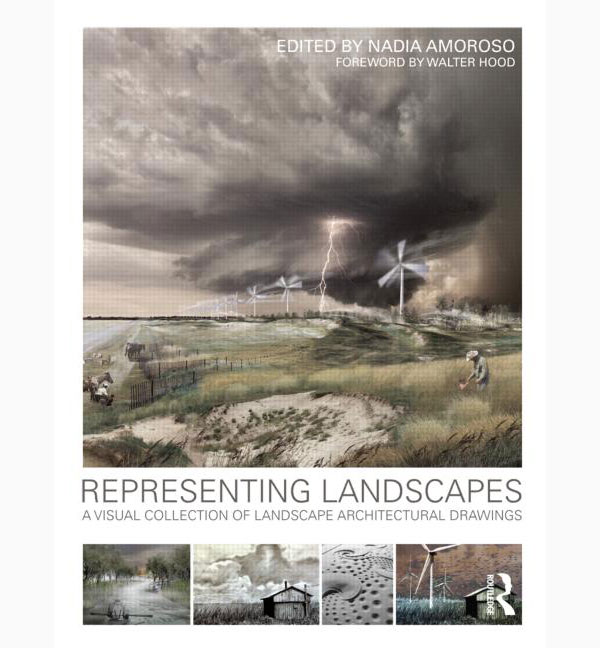
Editor: Nadia Amoroso (Routledge 2012)
Reviewed by: Shelley Long
One of landscape architecture’s distinguishing features is its interest in temporal effects and outcomes as well as larger scale systems thinking. The trouble then, for students and practitioners alike, is how to represent these landscapes of change with stationary and inert, yet evocative drawings and diagrams.
Representing Landscapes is a compendium of 28 short articles complemented by a plethora of mostly student work that seek to show a wide breadth and depth of representational techniques in landscape architecture across the globe.
 With contributing researcher/teacher/professor authors from universities around the world, the articles range from points of view on broadly applicable issues—such as whether to draw by hand or compose digitally—to specific academic essays on new trends in representation—such as the role of the index diagram in the emerging field of landscape urbanism.
With contributing researcher/teacher/professor authors from universities around the world, the articles range from points of view on broadly applicable issues—such as whether to draw by hand or compose digitally—to specific academic essays on new trends in representation—such as the role of the index diagram in the emerging field of landscape urbanism.
While most images and essays refer to traditional representation by hand, and “new” digital photoshop-collage as contemporary, there are also a few sections on 3d modelling and even digital fabrication.
Student work ranges from charcoal sketches used to evoke industrial feeling, to complex atmospheric and analytical models. Instead of just serving as pretty pictures, each image is annotated with an explanation of the assignment it was done for, a list of the hand and/or digital representational techniques used to generate them and why the teacher found it successful.
Editor Nadia Amoroso runs a data-design visualization company and teaches in the landscape architecture program at the University of Toronto. She introduces and concludes the book from the point of view of an educator: framing representational techniques not only as tools for showing, but also learning to “see” and understand landscapes. Drawing, rendering, and reiterating become “graphic research”.
With no reading longer than four pages, and most clocking in at two without reference lists, Representing Landscapes is perfect for short studio breaks and lapses in inspiration for students of Environmental Design and Landscape Architecture. Just like a thesis work book, it offers excellent examples of drawings and representational techniques that students can draw from while also self-motivating (I can totally do that!).
It’s global appeal for educators and students alike are the glimpses it provides into the pedagogies and courses offered in landscape architecture in various curricula from the Netherlands to New Zealand to China, while reading like a unified voice.
***
Shelley Long is a Calgary native-turned-Vancouverite and recent graduate of UBC’s Bachelor of Environmental Design program.


